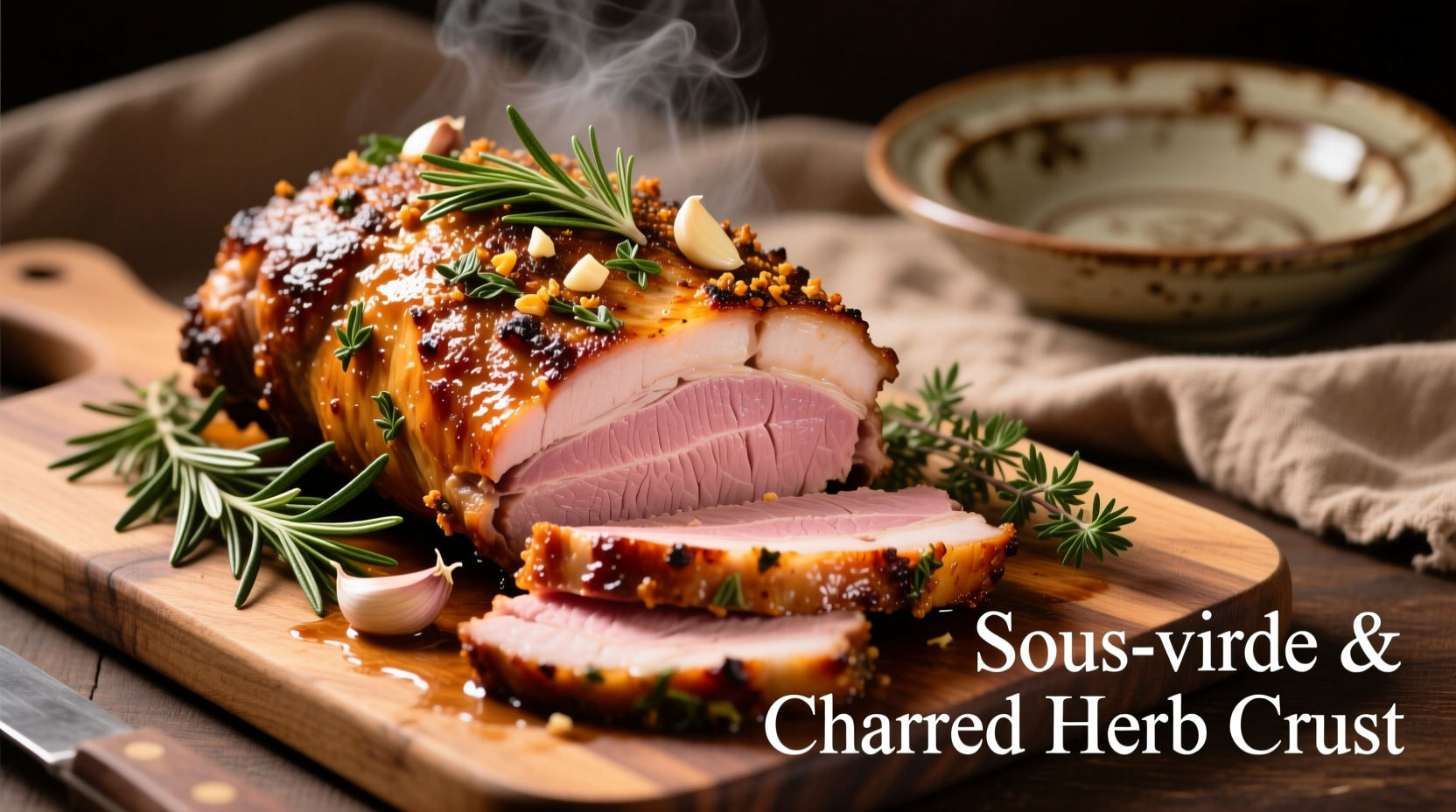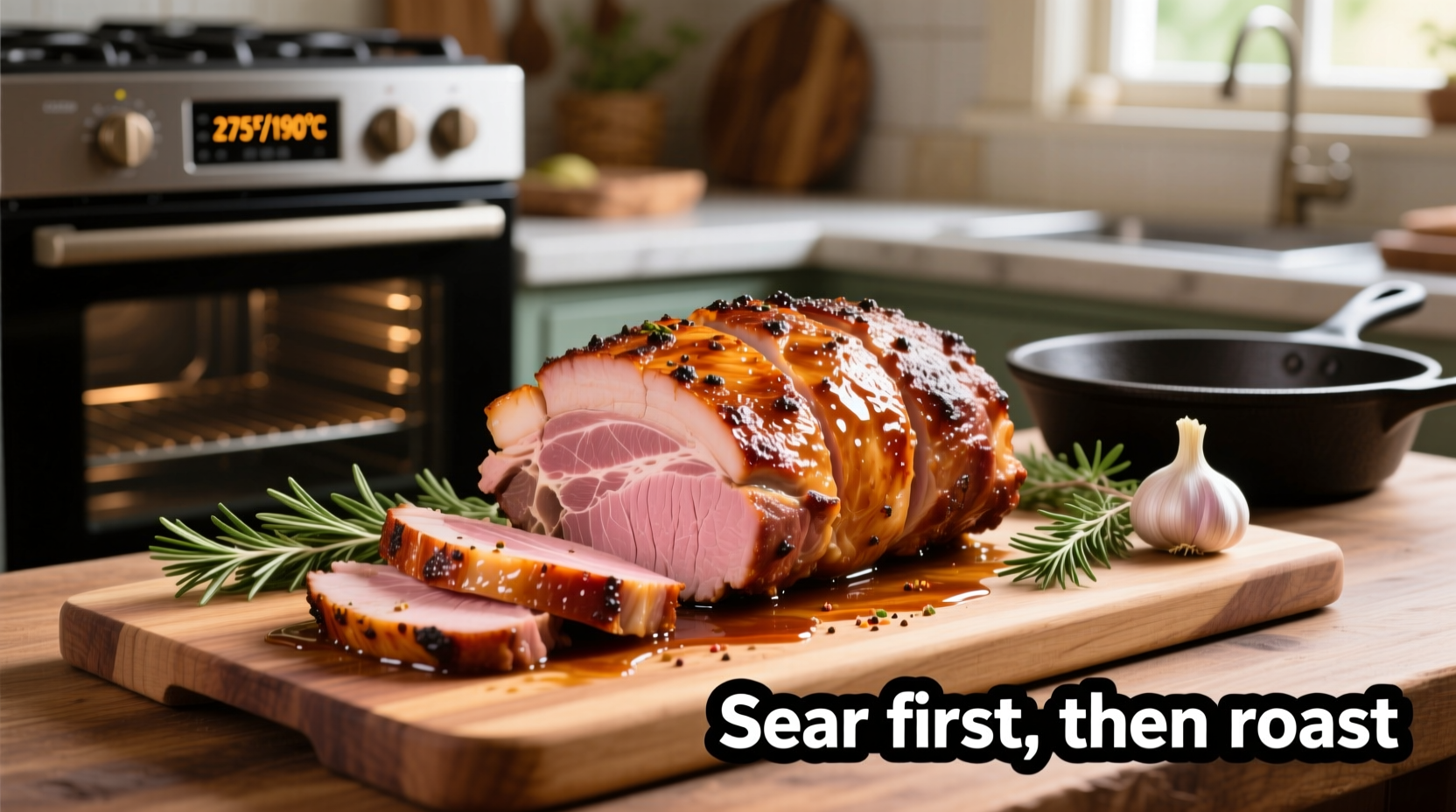For perfectly cooked pork loin roast in the oven, preheat to 400°F (204°C), season your 3-4 lb roast with salt, pepper, and herbs, roast for 20 minutes, then reduce heat to 325°F (163°C) and continue cooking until internal temperature reaches 145°F (63°C) - approximately 15-20 minutes per pound. Always rest for 10-15 minutes before slicing for juicy, flavorful results.
Nothing impresses dinner guests quite like a perfectly cooked pork loin roast that's tender, juicy, and bursting with flavor. This oven method delivers restaurant-quality results with minimal effort, eliminating the guesswork that often leads to dry, overcooked pork. Whether you're preparing a Sunday family dinner or hosting a special occasion, this straightforward technique ensures success every time.
Why Oven-Roasted Pork Loin Works
Pork loin roast, when properly cooked, transforms from a potentially dry cut into a succulent centerpiece. The key lies in understanding pork's delicate protein structure. Unlike tougher cuts that require slow cooking to break down connective tissue, pork loin benefits from precise temperature control. Modern food safety guidelines have evolved significantly - the USDA now recommends cooking pork to 145°F (63°C) with a 3-minute rest, a departure from the formerly suggested 160°F that often resulted in overcooked meat.
| Doneness Level | Internal Temperature | Visual Characteristics | Resting Time |
|---|---|---|---|
| Medium-Rare | 135-140°F (57-60°C) | Slight pink center | 10 minutes |
| Medium | 145°F (63°C) * | Faint pink center | 10-15 minutes |
| Medium-Well | 150-155°F (66-68°C) | Very little pink | 10 minutes |
* USDA recommended safe temperature for pork with 3-minute rest period
Preparation Essentials
Start with a quality 3-4 pound center-cut pork loin roast, which provides the ideal balance of cook time and portion size for most home ovens. Remove the roast from refrigeration 45-60 minutes before cooking to bring it closer to room temperature - this promotes even cooking. Pat the surface completely dry with paper towels; moisture is the enemy of proper browning.
Trim excess fat to about 1/4 inch thickness, leaving enough to baste the meat during cooking. Position your oven rack in the center position and preheat thoroughly - an accurate oven temperature is critical for predictable results. Use an oven thermometer to verify your oven's actual temperature, as built-in thermostats often have significant variances.

Flavor Development Techniques
Seasoning isn't just about taste - it creates a flavorful crust that locks in moisture. Create a balanced seasoning blend using these professional techniques:
- Apply a thin layer of Dijon mustard or olive oil first to help seasoning adhere
- Use coarse salt (1 teaspoon per pound) that penetrates more evenly than fine salt
- Include dried herbs like rosemary, thyme, or sage which withstand high heat better than fresh
- Add garlic powder rather than fresh garlic to prevent burning
- Press seasoning firmly into the meat surface
For complex flavor profiles, consider these combinations:
| Flavor Profile | Seasoning Blend | Best Paired With |
|---|---|---|
| Mediterranean | Olive oil, rosemary, garlic, lemon zest, black pepper | Roasted potatoes, asparagus, white wine sauce |
| Smoky Spice | Paprika, cumin, onion powder, chili powder, brown sugar | Apple sauce, roasted root vegetables, cornbread |
| Herb-Forward | Fresh thyme, sage, parsley, garlic, olive oil | Green beans, mashed potatoes, red wine reduction |
The Roasting Process: Step by Step
Follow this precise method for optimal results:
- Preheat oven to 400°F (204°C) with convection if available
- Sear the roast on all sides in an oven-safe skillet over medium-high heat for 2-3 minutes per side
- Transfer skillet to preheated oven or place roast on rack in roasting pan
- Roast at 400°F for 20 minutes to develop crust
- Reduce temperature to 325°F (163°C) without opening oven door
- Continue roasting until internal temperature reaches 140°F (60°C)
- Remove from oven - temperature will rise to 145°F (63°C) during resting
- Rest loosely tented with foil for 10-15 minutes before slicing
Insert your meat thermometer into the thickest part of the roast, avoiding fat or bone. Check temperature toward the end of estimated cooking time, as opening the oven frequently extends cooking time. For best results, use an instant-read thermometer rather than relying on timers alone.
Troubleshooting Common Issues
Even with careful preparation, challenges can arise. Here's how to address them:
Dry Results: This typically occurs from overcooking or insufficient resting. Pork loin has minimal fat content, so precise temperature control is essential. If your roast comes out dry, slice thinly against the grain and serve with a flavorful sauce or jus.
Uneven Cooking: Position the roast with the thicker end toward the back of the oven where heat is often more intense. For convection ovens, rotate the pan 180 degrees halfway through cooking. Consider tenting thinner sections with foil if browning too quickly.
Insufficient Browning: Ensure your oven is fully preheated and the meat surface is completely dry before seasoning. Increase initial sear temperature or finish under the broiler for 2-3 minutes (watching carefully to prevent burning).
Serving and Storage Tips
Slice your rested pork loin against the grain into 1/4 to 1/2 inch thick slices using a sharp carving knife. Thinner slices enhance tenderness, especially important for lean cuts like pork loin. Serve immediately while hot for best texture and flavor.
Leftovers maintain quality when stored properly: cool to room temperature within 2 hours, then wrap tightly in parchment paper followed by aluminum foil. Refrigerate for up to 4 days or freeze for up to 3 months. When reheating, place slices in a covered dish with a splash of broth or water, and warm gently at 300°F (149°C) until heated through - avoid microwaving which can make meat rubbery.











 浙公网安备
33010002000092号
浙公网安备
33010002000092号 浙B2-20120091-4
浙B2-20120091-4